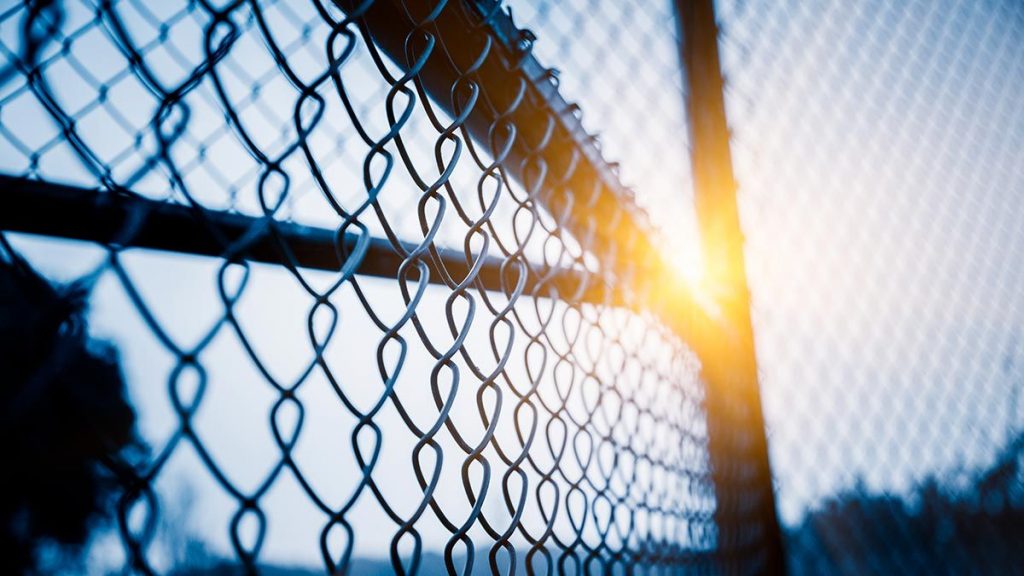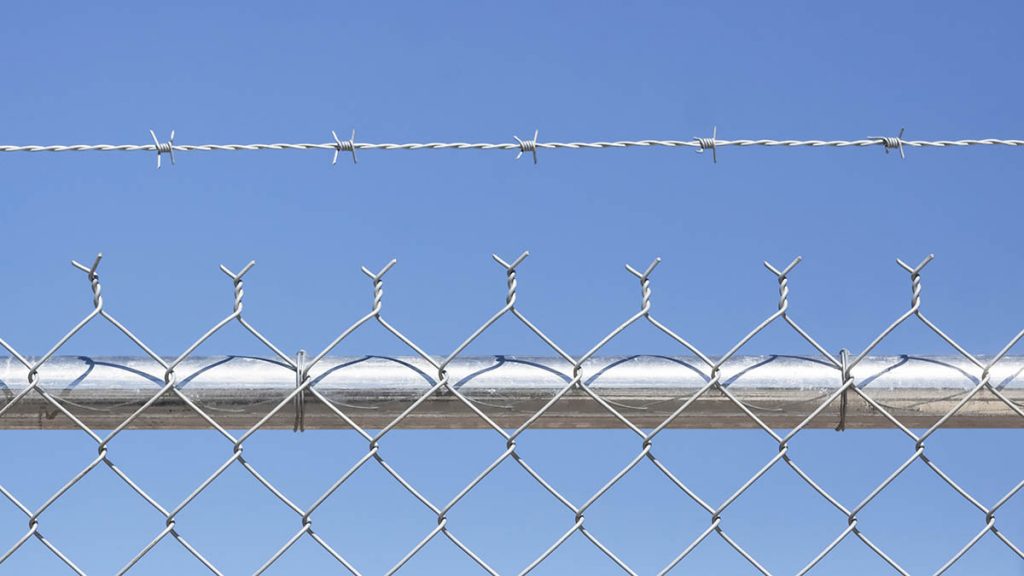Don't miss our holiday offer - 20% OFF!
Comprehensive Guide to Chain Link Fencing

Introduction to Chain Link Fencing
A chain link fence is a type of fence characterized by its unique diamond pattern, typically made from steel wires woven together in a zigzag pattern. The wires are laid horizontally and interwoven so that each zigzag hooks with the wires immediately on either side.
To prevent or reduce corrosion, chain link fences often use galvanized steel wire. Wires coated with linear low-density polyethylene (LLDPE) are also commonly used materials for these fences.
Due to the arrangement of the wires, chain link fencing is also known as wire mesh, wire fence, diamond mesh fence, and chain mesh fence. Additionally, they are referred to as hurricane or cyclone fences because wind and rain can pass through them without damaging the structure.
Installation of Chain Link Fencing
To install a chain link safety fence around a property, posts must first be installed to connect the mesh. These posts can be made of concrete, steel pipes, or wood and must be set into the ground for stability.
The basic steps to install a standard chain link fence include:
- Anchoring terminal posts: Terminal posts, such as gateposts and posts at the ends and corners of the fence, should be anchored or set in concrete to prevent tilting or falling under the tension of the stretched mesh.
- Installing line posts: These are posts set between terminal posts at intervals not exceeding three meters.
- Attaching the mesh: The chain link mesh is attached to one terminal post (if the fence is being installed in a line, attach it to one end), stretched to the next terminal post (or the other end for a single-side fence), and then the excess mesh is cut off and the ends are unwrapped to wrap around the post.
- Securing with tie wires: The chain link fence is then tied to the line posts using aluminum tie wires.
Additional steps for different installations include:
- Bottom tension wire or rail: To prevent movement between the posts at the bottom, a tension wire (also called a coil wire) is stretched from one terminal post to another to secure the mesh. This bottom tension wire is usually installed and secured to the line posts before attaching the chain link fence using hog rings.
- Top tension wire or rail: A top tension wire or rail can also be installed to enhance durability and stability, particularly for security fences.
- Intermediate rails: For fences taller than three meters, intermediate rails are generally installed to ensure higher stability.
Common Applications of Chain Link Fences
Chain link fences serve multiple purposes and are suitable for residential, commercial, and industrial uses. They are affordable, functional, and easy to install, offering a high level of security. Common applications include:
- Boundary demarcation: Chain link fences can delineate property boundaries while maintaining security and visibility, ideal for farms.
- Security: These fences provide a cost-effective security solution for various properties. Adding barbed wire at the top can further deter climbing, and materials like vines or vinyl slats can enhance privacy.
- Containment: Chain link fences are perfect for keeping children and pets safe within a property, ensuring they can roam freely while preventing escape underneath with appropriate bottom rails or tension wires.
- Intrusion prevention: They are also effective in keeping out unwanted visitors or wild animals, allowing property owners to see through the fence and easily identify intrusions.
- High-security facilities: Chain link fences serve as a first line of defense in high-security areas like laboratories, prisons, and military bases.
- Sports fields and playgrounds: These fences prevent balls from flying out of sports fields and keep children safe in playgrounds while allowing spectators to watch games from outside.

Types of Wire for Chain Link Fences
Different types of wire are used in chain link fences, with the most popular being heavy-duty galvanized steel wire. Galvanization involves coating the wire with a protective, rust-resistant metal layer, usually zinc, at high temperatures (around 450°C).
- Galvanized wire: Standard chain link fences use 2.5 mm diameter galvanized wire, while commercial fences use 3.15 mm diameter heavy-duty wire, ideal for extreme environments.
- Vinyl-coated wire: Wires can also be coated with black or green PVC or vinyl, providing an extra layer of rust and corrosion protection, especially suitable for coastal areas.
Privacy Options for Chain Link Fences
A common misconception is that chain link fences are unsuitable for privacy due to their open weave. However, there are several ways to enhance privacy:
- Privacy fence screens: These are weather-resistant and easy to attach.
- Slats: These can be woven horizontally or vertically into the mesh, reducing visibility from outside.
- Vines: Planting vines on the fence can provide natural privacy.
- Green panels: Eco-friendly, low-maintenance privacy covers can also be used for a more natural look.
By understanding these aspects, you can make an informed decision about using chain link fences for various needs, ensuring functionality, security, and aesthetic appeal.
Contact the specialists at Hebei Qiangyu Hardware & Mesh Co., Ltd.
To learn more about your options on construction materials, rural fencing, and security fencing, contact us here at QiangYu Fence.
Hebei Qiangyu Hardware & Mesh Co., Ltd. is a professional manufacturer with more than thirty years of experience in fence production. We have professional sales team and design team, which can provide you with the best quality products and services.
We produce fencing equipment with a variety of equipment such as mesh welding machine, laser cutting machine, laser welding frame machine, medium welding welding machine and spraying equipment to ensure the high quality and excellent performance of our products.
